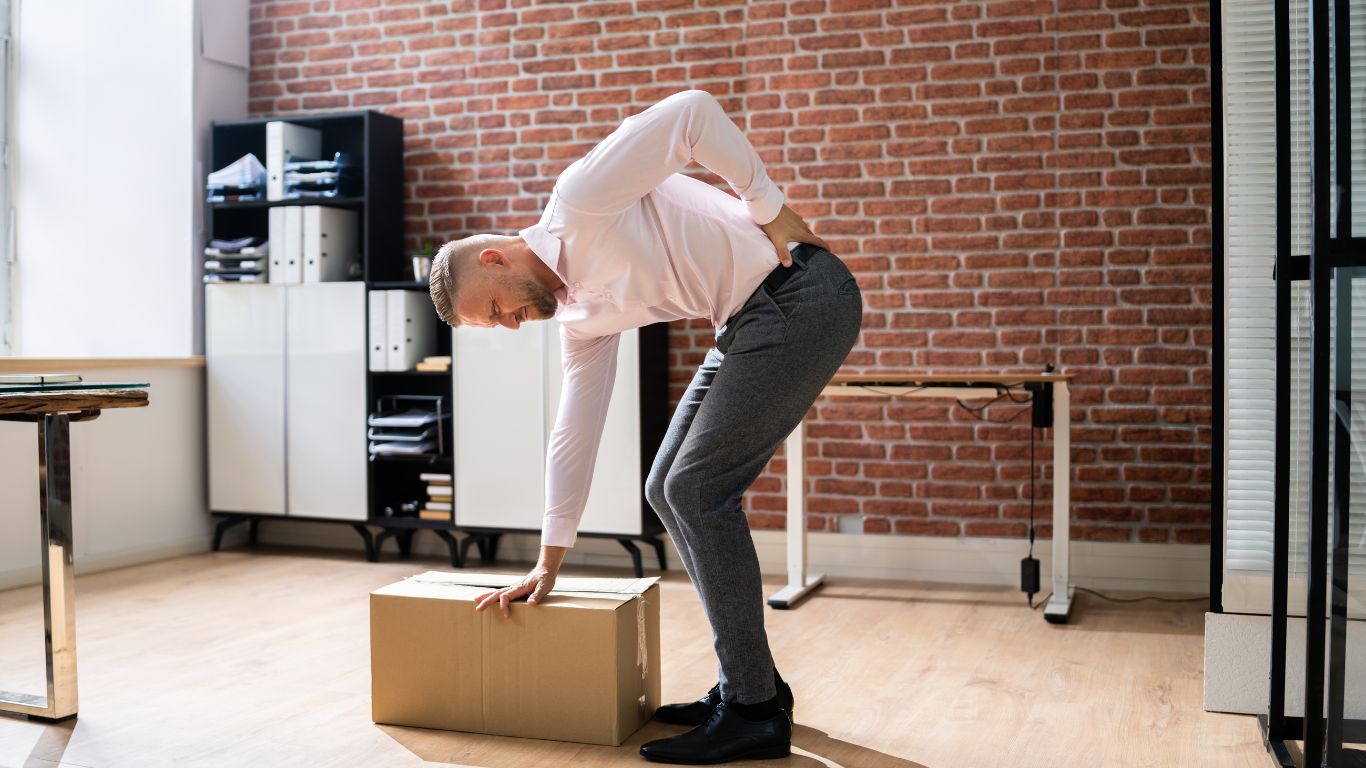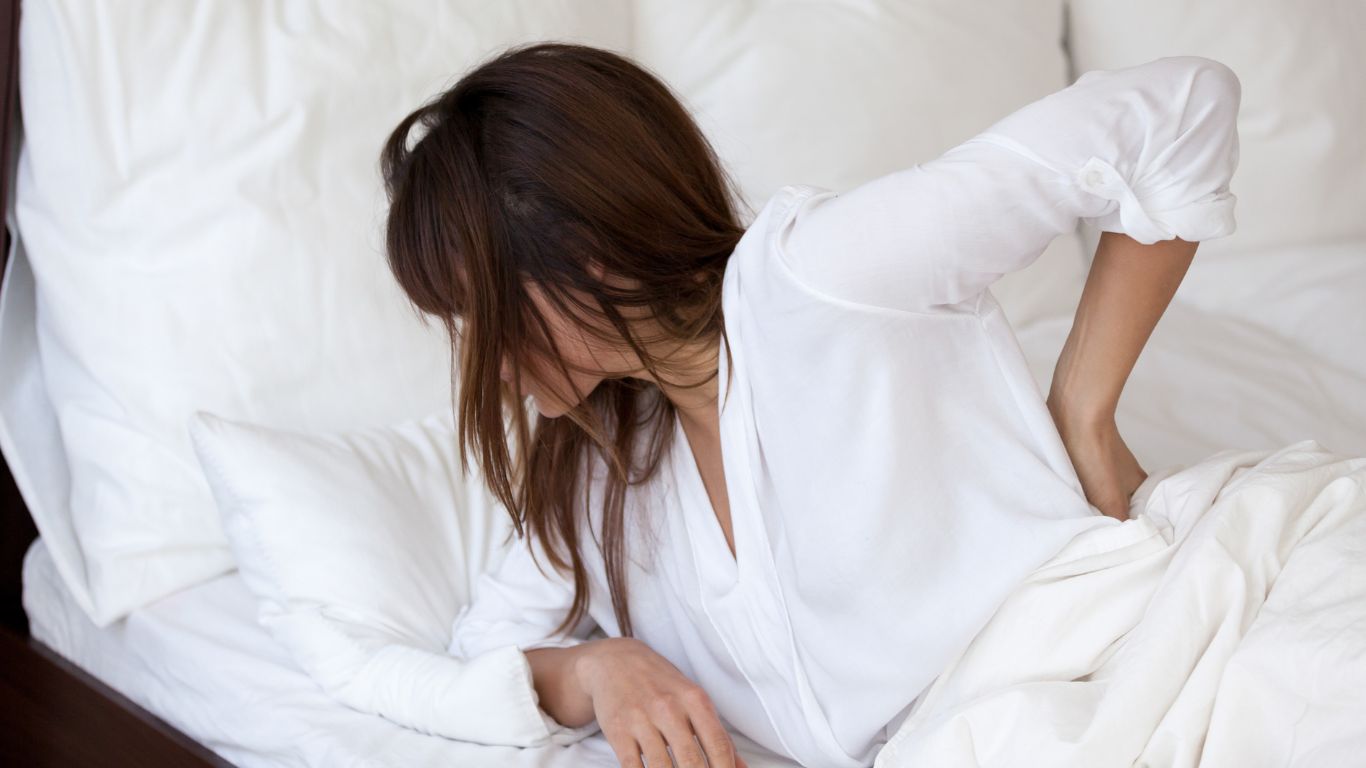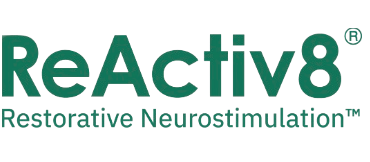Medically reviewed by Dr. Michael A. Fishman, MD, MBA. Dr. Fishman is a double board-certified Anesthesiologist and Interventional Pain Physician.
Back pain is one of the most common health issues worldwide, affecting people of all ages and walks of life. In fact, research shows that around 80% of Americans will deal with back pain at some point, making it a top cause of disability and missed workdays.
“Not all back pain is created equal or treated the same way,” explained Dr. Michael A. Fishman, a double board-certified interventional pain physician. “It’s important to work with a healthcare provider to understand why your back may hurt, what you can do to relieve it, and how to prevent it from returning.”
This is because back pain isn’t solely about physical discomfort. It can disrupt daily life, lower productivity, and affect overall well-being. To make matters worse, myths and misinformation about preventing back pain often lead to ineffective or even harmful solutions.
By busting these myths and focusing on proven, evidence-based strategies, you can be more empowered to take control of your spinal health and find lasting relief.
Myth #1: ” Bed Rest Is the Best Cure for Back Pain”
The belief that rest is the best cure for back pain has been around for a long time, rooted in cultural habits and outdated medical advice.
Until the 1980s, doctors even prescribed bed rest for pain, which reinforced this idea. They believed staying still would prevent further harm and help the body heal faster.
But modern research has shown this approach can make the problem worse.
The Truth: Staying Active Helps
Today, staying active is widely recognized as one of the best ways to recover from most types of back pain.
Medical research published in the Healthcare Journal highlights the benefits of physical activity for lower back pain. Specifically, it shows that exercise reduces pain, strengthens muscles, improves blood flow, and decreases stiffness.
Movement also boosts circulation, delivering oxygen and nutrients to injured tissues, which promotes faster healing. At the same time, it triggers the release of endorphins, the body’s natural pain relievers, helping to ease discomfort.
On the other hand, prolonged rest (longer than 48 hours) can weaken muscles and slow circulation, ultimately delaying recovery. Extended inactivity weakens muscles, reduces circulation, and can increase stiffness, all of which make it harder for the body to heal.
To support recovery and prevent future issues, a physical therapy plan typically includes personalized exercises. These exercises are aimed at reducing pain, improving posture, and restoring balance.
Continuing these exercises at home is just as important. Building a routine, such as doing a short set after your morning shower or blocking off time on your calendar, can help turn your home program into a lasting habit. These small steps make a big difference in long-term results.
Myth #2: “Only Older Adults Suffer from Back Pain”

Back pain is often misunderstood as a problem exclusive to older adults. However, this isn’t the case.
Aging does contribute to changes in the spine, such as decreased bone density, reduced disc hydration, and loss of flexibility. Nevertheless, these aren’t the only causes of back pain.
Likewise, the idea that youth provides immunity to back pain is also a common misconception. Younger people can develop musculoskeletal issues, and there are a variety of painful conditions of the spine that are known to emerge in adolescence.
If left unaddressed, these episodes of back pain can progress into chronic pain. Recognizing and addressing these risks early is key to maintaining long-term spinal health and physical function.
The Truth: Back Pain Affects All Age Groups
Research published in the journal Spine shows an even more concerning trend. By the time they reach 18, half of all girls will have experienced at least one episode of back pain, and the same is true for boys by the age of 20. Therefore, this growing prevalence challenges the idea that back pain is only a problem for older generations.
The causes of back pain in younger populations are often linked to modern lifestyles, such as long hours on screens, poor posture while studying, carrying heavy school bags, and high-impact sports injuries. Therefore, excessive screen time and sports injuries are common triggers for younger individuals.
Adults, on the other hand, are more affected by prolonged sitting and cumulative strain. Despite these differences, some contributors, such as a sedentary lifestyle, are universal across age groups.
Myth #3: “Poor Posture is the Sole Cause of Back Pain”
For decades, people have believed that poor posture is the main cause of back pain, thanks to campaigns, ergonomic tools, and schools promoting “proper posture” as the ultimate solution.
The idea that slouching or bad alignment leads to pain has been ingrained in public perception, as noted by Time Magazine.
While posture does play a role in back health, recent research suggests its impact is smaller than we once thought. Therefore, the link between posture and pain is more complex than it seems and is often oversimplified.
The Truth: Multifactorial Causes of Back Pain
Modern research shows that back pain isn’t just about posture. A mix of physical, psychological, and lifestyle factors influences it.
For example, stress and mental health can also be big contributors. Studies have found a strong connection between stress, anxiety, and how we feel pain, showing that emotional well-being can make physical symptoms worse.
Diagnosing the cause of back pain can also be tricky because it’s rarely caused by a single factor. It’s often a combination of muscle issues, stress, and lifestyle habits that lead to chronic pain and dysfunction after an injury.
Proper treatment requires a well-rounded approach that focuses on the symptoms and the diagnosis.
For example, almost every human has some degree of degenerative spine disease as they age, but that does not mean that every person on the planet has pain. That’s why understanding the nuances of “why it hurts” in the context of the normal aging spine requires a clinical expert.
Depending on the diagnosis, this clinical expert can then develop a treatment plan to provide you with long-lasting relief while improving function.
Myth #4: “Lifting Heavy Objects Always Causes Back Pain”

While improper technique can cause strain, injuries are more often linked to weak muscles, poor movement, lack of warm-up, or repetitive stress.
This misconception especially runs rampant in workplaces such as factories and warehouses, where injuries are more visible. Unfortunately, instead of promoting proper lifting techniques or strength-building, many avoid lifting entirely, perpetuating the fear.
The Truth: Proper Technique Prevents Injury
Studies show that most lifting-related injuries result from improper technique rather than the act of lifting itself.
Key tips for safe lifting include:
- Bend your knees to protect your back and let your legs do the heavy lifting.
- Engage your core for added stability and less strain on your spine.
- Keep your back straight to maintain proper posture and avoid injuries.
- Hold the load close to your body to take the pressure off your arms and back.
- Plan ahead to gauge the object’s weight and avoid unexpected challenges.
- Use team lifting for heavy items to share the workload and prevent overexertion.
Adopting these ergonomically sound practices protects not just the back but the entire musculoskeletal system. Proper technique empowers individuals to handle lifting tasks with confidence and precision. Thankfully, workplace programs like OSHA training or personal education resources such as the National Safety Council’s guidelines can further reinforce these habits.
Alongside proper lifting techniques, strengthening the core, lower back, and surrounding muscles creates a natural support system for the spine. This concerted effort makes your body better equipped to handle physical stress.
In other words, building strength and resilience through targeted exercise prepares your body for the movements and challenges of daily life. This kind of training not only supports long-term health but also helps prevent injuries before they start.
Research from the Journal of Integrative Medicine shows that regular core strength training may reduce the risk of lower back pain. Incorporating lower back strengthening exercises into your workouts can build the strength needed to lift heavier loads safely and efficiently.
Myth #5: “Exercise Worsens Back Pain”
Many individuals with back pain worry that physical activity might worsen their symptoms or cause further injury. This fear often stems from the natural association between pain and harm, along with previously stated and outdated advice to rest excessively after discomfort.
However, avoiding movement entirely can be counterproductive. A 2023 study in the Journal of Pain Research found that fear-avoidant behavior occurs when individuals avoid activity due to an anticipation of pain. This behavior can result in muscle deconditioning and increase the risk of chronic pain. While certain injuries may require temporary rest and careful rehabilitation, prolonged inactivity can have negative effects.
The Truth: Tailored Exercise Can Relieve Pain
Contrary to this popular belief, appropriately tailored exercise can serve as a potent tool for alleviating and preventing chronic low back pain.
A 2017 review in the Journal of Physiology found that regular exercise programs effectively reduce pain and improve functionality. Therefore, activities like strength training, yoga, stretching, and low-impact cardio exercises such as walking or swimming can enhance spinal stability, mobility, and circulation. Core-focused movements, including planks and bridges, are also particularly beneficial.
To maximize benefits and minimize risks, a personalized exercise plan created with professional guidance is the best first step. Speaking with your doctor and working with a trained physical therapist can ensure proper form and modifications that consider your injury, fitness level, and overall health.
When considering your treatment options, it is imperative to consult with a health-care professional to assess your back pain for a proper diagnosis. Through their assessment, they will pinpoint the cause of your back pain and recommend the best treatment plan for you.
For example, if you suffer from persistent or worsening lower back pain that fails conservative exercise or pharmacologic treatment, you could be suffering from dysfunction of the multifidus muscles.
This deep stabilizing muscle group plays a crucial role in supporting your spine, particularly in the lower segments that are most vulnerable to degeneration.
Dr. Fishman adds that “Instability of the lumbar spine and chronic low back pain is a battle between the force of gravity and the musculoskeletal spine. The multifidus muscles are the primary segmental stabilizer of the lumbar spine, especially at L4-5 and L5-S1, which are the most common levels affected by degenerative spine changes due to the forces they endure.”
ReActiv8 is a small implantable device that delivers electrical stimulation to the nerves in your lower back, helping to reduce pain and improve function. It is designed for people with chronic lower back pain caused by multifidus muscle dysfunction. If your doctor determines that your low back pain is due to dysfunction in your multifidus muscles, they may recommend ReActiv8 restorative neurostimulation therapy.
Ready to say goodbye to your lower back pain? Contact your doctor today to see if ReActiv8 is right for you.
Learn More About ReActiv8® For Chronic Lower Back Pain Relief Today!
Myth #6: “A Firm Mattress Prevents Back Pain”

Historically, many mattress manufacturers and healthcare providers endorsed firm mattresses. They associated their rigid structure with proper spinal alignment and reduced strain. Advertisements also capitalized on this idea, persuading consumers that firmer meant healthier.
However, this idea overlooked the diversity in body types, sleep positions, and individual preferences. All of these factors play critical roles in determining what ensures restorative sleep.
Over time, this narrative cemented itself into popular opinion. It linked mattress firmness with back health without substantial scientific evidence to back the claim.
The Truth: The Right Mattress Varies by Individual
Modern research has dismantled the notion that a firm mattress is universally ideal for alleviating back pain.
Sleep studies have also explored the relationship between mattress firmness and pain relief. They found that a medium-firm mattress often provides the best balance of comfort and spinal support. An overly firm surface may create pressure points, especially for side sleepers, while a surface that’s too soft may fail to adequately support the spine.
Finding the Right Balance of Comfort and Support
Ultimately, the right mattress for any individual is highly subjective. Factors such as body weight, preferred sleeping position, and personal comfort should be considered when determining the ideal mattress type.
Plus, a personalized approach, including testing different mattress types, is recommended to achieve restful, pain-free sleep. There is no universal solution; the best mattress is one that aligns with an individual’s specific needs and preferences.
Myth #7: “Back Pain is Inevitable with Aging”
The belief that back pain is an unavoidable consequence of aging is a deeply rooted myth that often leads us to accept chronic discomfort as a normal part of growing older.
This misconception can be traced to the visible changes in spinal health, such as degenerative disc disease or arthritic developments, which are common with age.
However, equating the aging process with unavoidable back pain oversimplifies the relationship between age and spine health. This false idea can disempower us from seeking proactive solutions and instead foster a feeling of accepting any persistent discomfort.
The Truth: Age Does Not Guarantee Back Pain
While certain age-related changes in the spine are indeed inevitable due to the natural wear and tear on the body, chronic back pain is not guaranteed.
A study involving 400,000 participants highlighted that, regardless of age or BMI, unhealthy lifestyle choices are directly linked to the development of lower back pain over time. For instance, sedentariness, low activity levels, and obesity are leading contributors to the progression of back pain that are within an individual’s control.
While preventive care does not eliminate natural age-related spine changes, it can significantly reduce the impact of these changes on daily life. This includes taking frequent breaks from sitting or standing for prolonged periods, maintaining proper posture while sitting and standing, and engaging in regular physical activity.
These simple lifestyle changes are the first line of defense against back pain.
Final Thoughts
Back pain is a common challenge, but with mindful preventive care and a commitment to healthy habits, it is often manageable. Listening to your body and prioritizing your spinal health can lead to a more comfortable and active life.
However, if you experience persistent or worsening back pain that does not improve with conservative management, speak with your doctor about ReActiv8.
ReActiv8 is an innovative medical device that facilitates long-term relief from chronic back pain by retraining and strengthening the stabilizer muscles of the lumbar spine. It works by using your own nerves and muscles to support your spine more effectively, helping to restore function, reduce pain, and improve your quality of life.
With the help of ReActiv8, you may even return to activities that you once thought were impossible due to your chronic back pain. Dr. Fishman shared that “For example, one of my patients, who had limited mobility, is now back to riding her horse and even competing again. It’s a powerful reminder of what’s possible with the right support!”
Learn More About ReActiv8® For Chronic Lower Back Pain Relief Today!
